Mobilizing Organizational Value Towards Equity (MOVE)
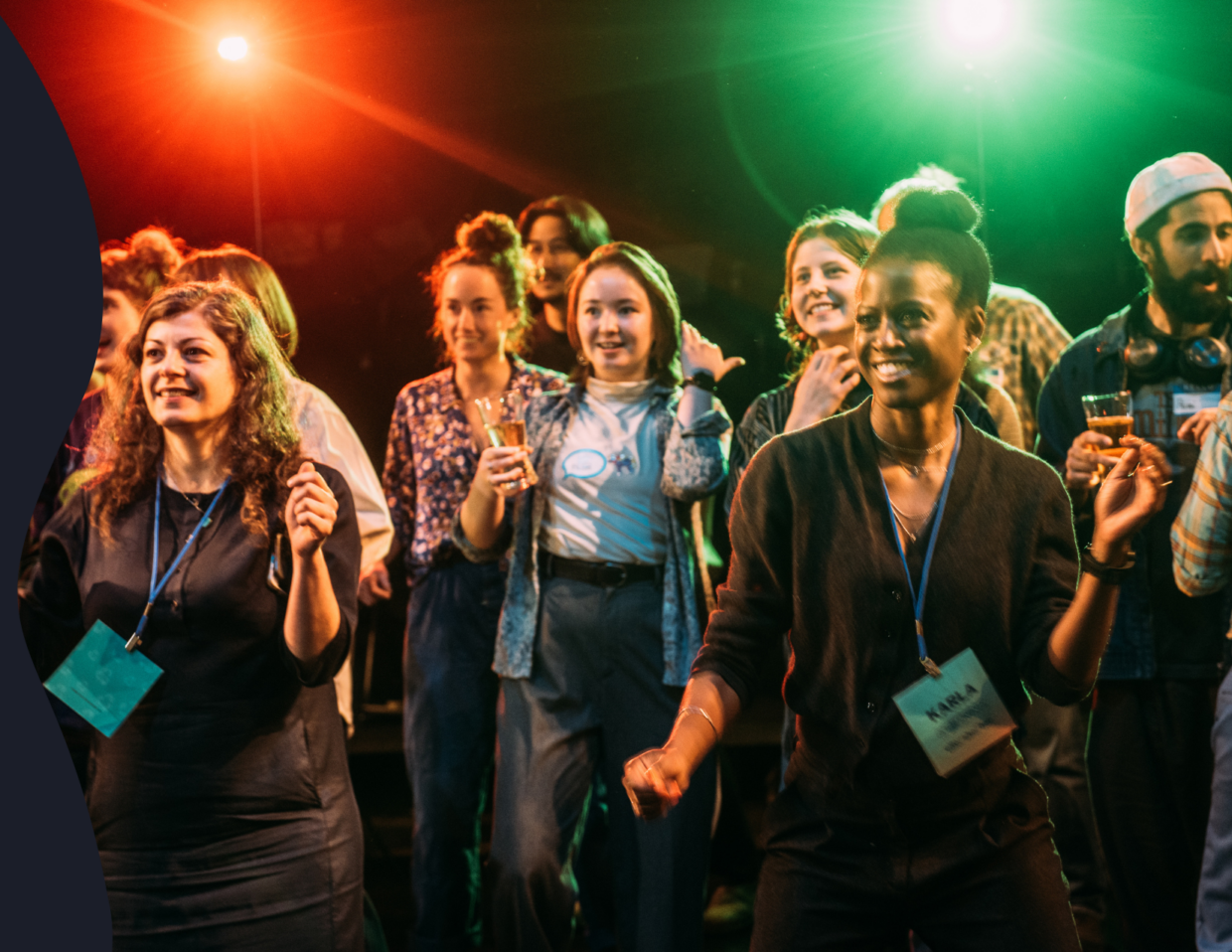
MOVE provides a structured process to foster equity within dance organizations.
As dance continues to evolve, embracing equity ensures that our art form remains culturally relevant and resonant with audiences from all walks of life.
Our approach encompasses four key stages:

Mobilize the network, stakeholders, and self.

Transform organizational practices from the current state to a future state of equity.

Identify values and create actionable implementation plans.

Develop and test equity pathways through an iterative process, sharing the journey and its stories.
The MOVE project also incorporates somatics and relational practices, moving beyond intellectual concepts to embodied experiences. This approach enhances empathy, conflict resolution, and the overall quality of relationships within the network.
MOVE aims to challenge assumptions, promote dialogue, and build a more inclusive and equitable future for the Canadian dance community. By integrating these strategies and insights, CanDance continues to evolve and support equity-deserving communities.
The Beginning of MOVE: CanDance’s Journey Towards Equity
Inspired by the “We See You White American Theatre” document, CanDance revised its strategic plan to prioritize equity, leading to the MOVE project.
This initiative aims to reshape the network by embedding equity at its core. For more insights, watch Anne Marie Williams, Executive Director of the CanDance Network, discuss the journey towards equity and the change it has inspired within the dance community.
Meet the Team Behind the MOVE Project
The MOVE project team was tasked with developing an organizational strategy to equip and facilitate the implementation of equity in the CanDance network.


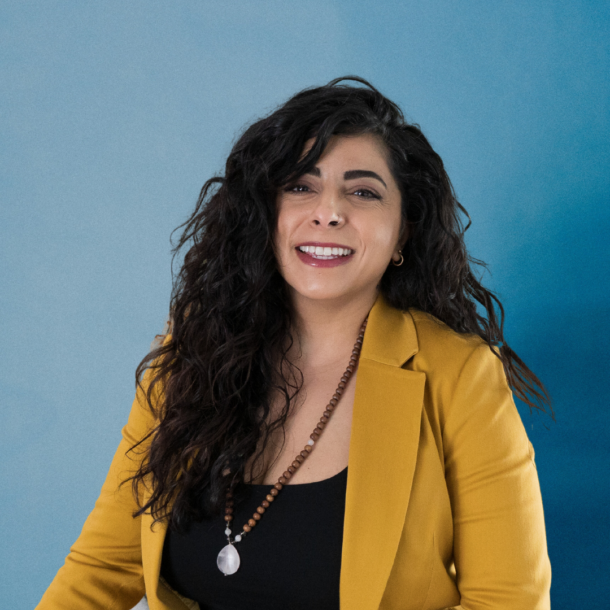
Soni Dasmohapatra is a consultant, educator, and arts practitioner specializing in yoga and somatics for self-discovery and artistic creation. With over 20 years of experience in public service, academia, nonprofits, and philanthropy, she has worked across Canada and internationally. www.sonidasmohapatra.com
Mallika Nayak is an undergraduate student at the University of Alberta studying psychology and economics. She is a research consultant with experience in policy work and analysis. Mallika is extremely passionate about her Indian roots, especially Classical dances and music.
Darine Moukhaiber-Krysko is a communications strategist and founder of Quip Creative. With expertise in strategic planning and storytelling, she provides tailored communications solutions for nonprofit organizations and brands, focusing on authentically building community online and in-person.
Understanding Equity: A Foundation for Fairness and Justice
In this video, Soni Dasmohapatra explains the concept of equity and its significance within the dance ecosystem.
Equity goes beyond equality by recognising and addressing the diverse needs of individuals to ensure everyone has the resources and opportunities to thrive.
Intersectionality, a term coined by Dr. Kimberly Crenshaw, examines how various forms of identity impact power dynamics within systems. Understanding these concepts is crucial for fostering fair and just relationships in our dance community.
To further deepen your understanding, we recommend this podcast episode from Imagine Canada, which explores equity, diversity, and inclusion within the nonprofit sector, offering valuable insights that align with fostering equitable practices and understanding within the dance community.
Acknowledging Indigenous Lands
Recognizing Indigenous Peoples as distinct right holders in Canada, it is important to acknowledge their unique relationship with Canada and their rights as framed by the United Nations Declaration on the Rights of Indigenous Peoples. Visit the National Centre for Truth and Reconciliation for more information on these rights and the history of residential schools.
A Personal Land Acknowledgment by Soni Dasmohapatra
“We express our gratitude to Turtle Island and honour all First Nations, Métis, and Inuit who have lived on this land since time immemorial. We commit to learning and moving forward together in the spirit of reconciliation, embracing Indigenous worldviews.
The jingle bell dress dance from Indigenous tradition on Turtle Island is a dance of healing and prayer. As a Kathak dancer from India, I resonate with this tradition, as I also wear bells and offer prayers through dance. These connections highlight the transformative power of dance as a pathway to reconciliation. I am grateful for the teachings and wisdom shared by Indigenous dancers and elders.”
June, being National Indigenous History Month, reminds us of the Truth and Reconciliation Commission‘s recommendations for the arts, culture, and heritage sectors.
Catherine Dagenais-Savard, a contemporary and Indigenous dancer from Montreal, shared a conversation with Soni to build dialogue around the significance of Indigenous worldviews in dance, the importance of land acknowledgments, and the value of relationality in the arts.
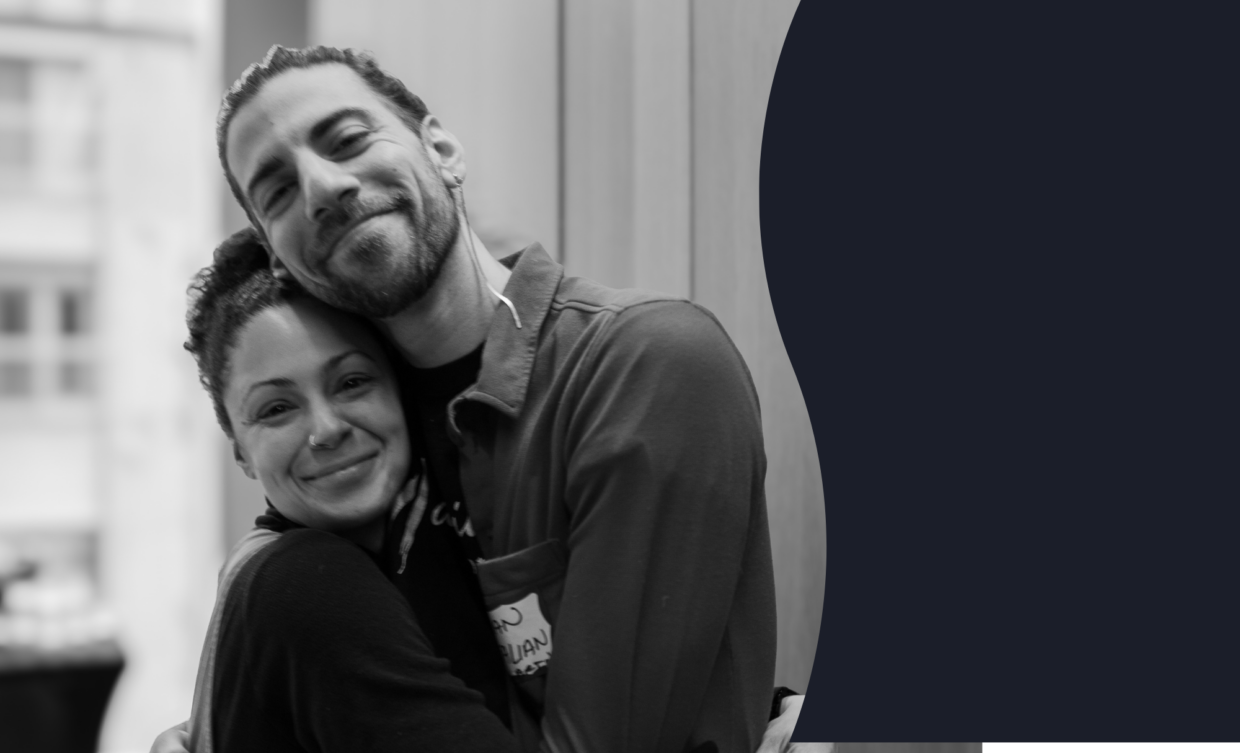
How can you prioritize equity within your organizations?
Explore these practical steps and strategies to guide you.
Appreciative Inquiry
Appreciative Inquiry emphasizes strengths rather than weaknesses to drive positive change within organizations. This approach fosters a collaborative environment by focusing on what works well and envisioning an ideal future. It follows a 4D model:
- Discover: Identify and appreciate the best of “what is” in your organization.
- Dream: Envision “what might be” by imagining a future where the strengths are amplified.
- Design: Co-construct “what should be” through planning and prioritizing strategic initiatives.
- Destiny: Sustain “what will be” by implementing and continuously improving the initiatives.
For a detailed guide on how to implement Appreciative Inquiry in your organization, visit this resource.
Somatic Activities
Incorporate somatic activities to enhance well-being and foster a more equitable environment. These simple yet powerful practices help individuals regulate their nervous systems, ground themselves, and connect more deeply with their surroundings. Explore our series of somatic activity videos below to discover practical techniques that can transform both personal and organizational dynamics:
1. Calming Your Nervous System: The Power of Humming
Discover the soothing effects of humming on your nervous system. This video demonstrates deep breathing and various humming techniques to help you return to a state of calm and improve your interactions with others.
Try This: Take a deep breath in and hum for 5-10 seconds. Repeat this five times and notice how you feel.
2. Stimulating Your Vagus Nerve: Tapping for Nervous System Reset
Explore a powerful tapping technique designed to stimulate and reset your vagus nerve. This method enhances your body’s readiness and balance, promoting a state of equilibrium and well-being.
Try This: Tap gently on your collarbones for 30 seconds to a minute, noticing the sensations in your body.
3. Grounding Yourself: Orientation and Awareness Techniques
Engage in orientation exercises to ground yourself and heighten your awareness. This practice creates a sense of presence and calm, helping you navigate any environment with greater ease and mindfulness.
Try This: Look around the room, taking in the details, and then touch a nearby object to ground yourself in the present moment.
The Somatic Arc in the Dance Ecosystem and Equity Work
The somatic arc fosters organizational transformation by incorporating body-based practices that align actions with core values. This approach integrates somatic practices into the Theory of Change framework, emphasizing physical intuition and relational dynamics for deeper, more holistic change.
Theory of Change
The Theory of Change is a participatory process involving stakeholders to:
- Define measurable success indicators.
- Formulate actions to achieve goals.
- Test assumptions underlying the change process.
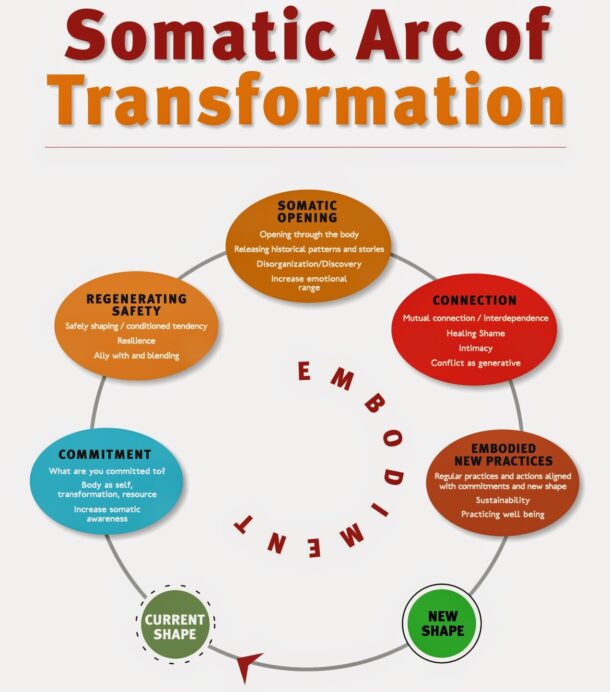
Somatics and Equity
In the dance ecosystem, somatics addresses power dynamics and promotes healing by:
- Connecting individuals to their collective bodies, including family, community, and society.
- Encouraging trust, self-worth, and alignment with personal and collective values.
- Fostering equitable relationships and inclusive environments.
Integrating the somatic arc into organizational change helps create inclusive and equitable spaces within the dance community. To learn more about the principles of somatics and their impact, visit Psychology Today.
Insights From MOVE Workshops What We Heard
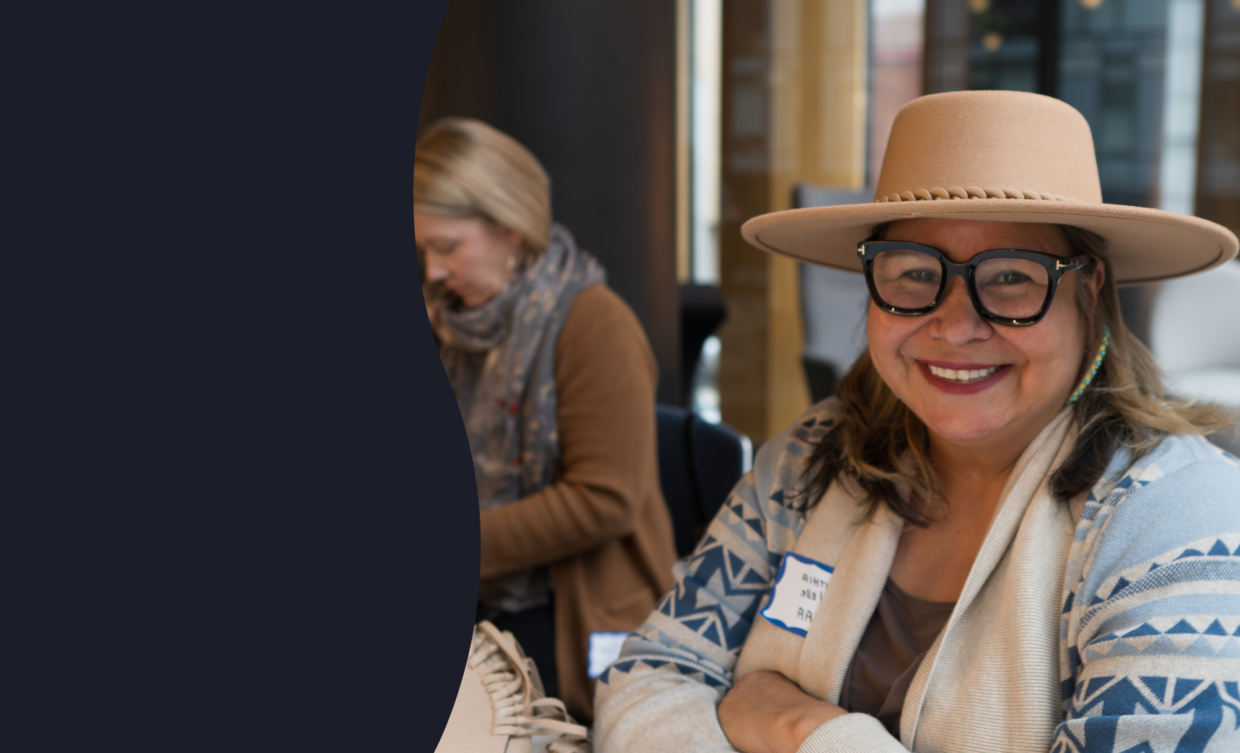
Through a series of interactive workshops, the MOVE project engaged participants in discussions and activities focused on fostering equity within dance organizations. Here’s a summary of key insights and themes from these sessions.
Workshop 1: Exploring Presenting Styles
During the first workshop, participants engaged in activities to contrast their understanding of ‘relational presenting’ versus ‘transactional presenting’. This helped highlight different approaches to engaging with audiences and stakeholders.

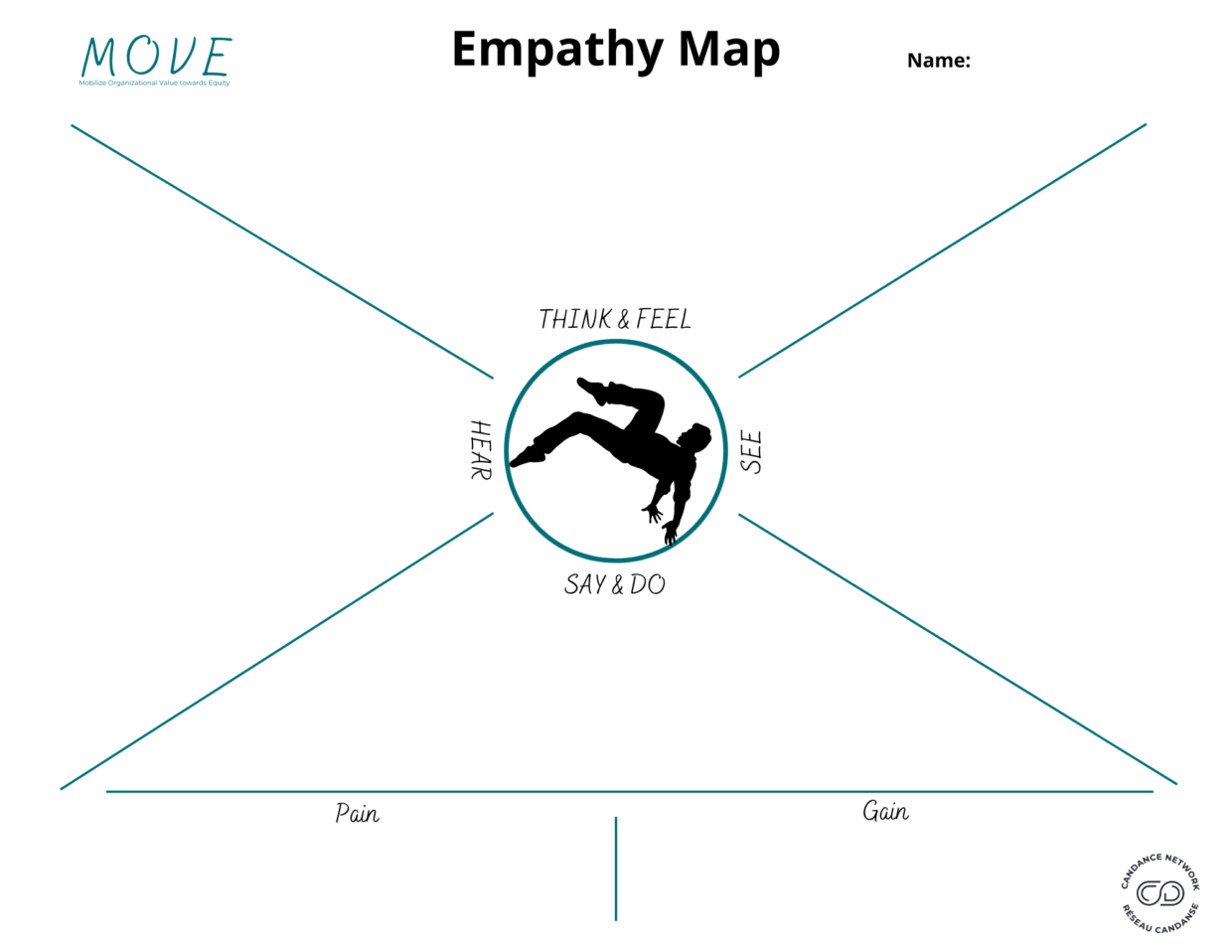
Workshop 2: Empathy Mapping for Equity
In the second workshop, participants created empathy maps to explore implicit biases and assumptions. This exercise provided valuable insights into creating more inclusive and equitable practices and policies. Download the empathy map to conduct your own empathy mapping exercise and discover shared values and insights.
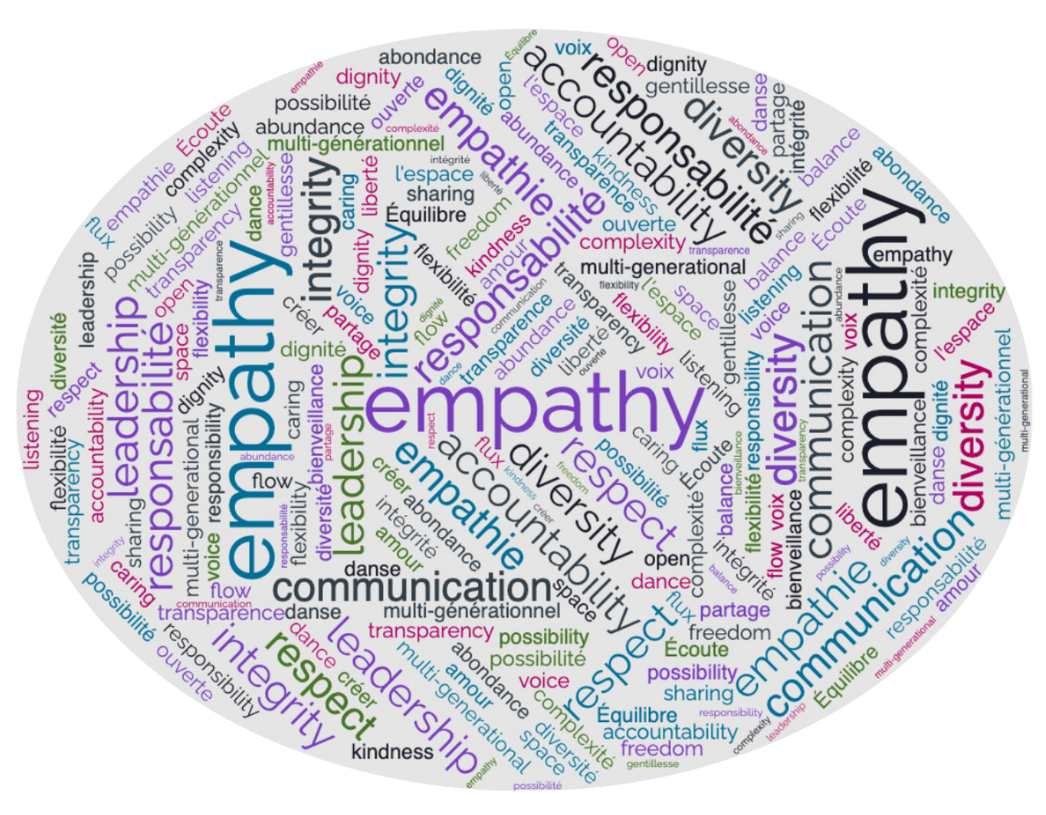
This word cloud is a compilation of all the values that participants shared in their empathy maps during the workshop. The most prominent theme that emerged was empathy, highlighting its importance across the board.
Workshop 3: Ethical Relationality
In the third workshop, participants engaged in an activity where they were discussed their connection with the land. This is the concept of ethical relationality, as developed by Dr. DwayneDonald, and involves moving away from transactional ways of engaging with others and towards a relationality that acknowledges the organic connectivity that exists between human beings and the natural world. In his essay “We Need a New Story: Walking and the wâhkôhtowin Imagination“, Dr. Donald emphasises the importance of engaging with the land, its stories, and its teachings in a respectful and ethical manner.
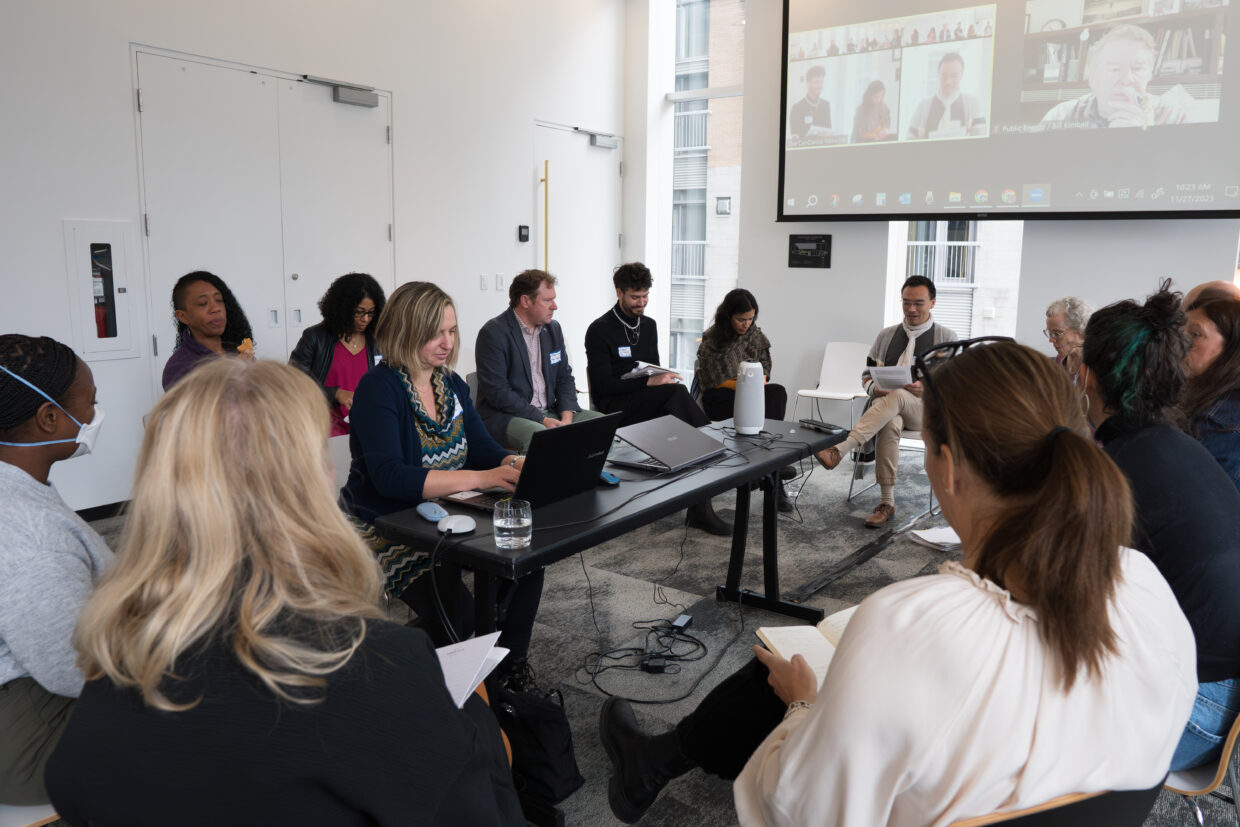
Workshop 4: Synthesizing Findings
The final workshop, held online, allowed participants to share updates from their geographic locations and review the resource webpage, providing valuable feedback and identifying tools to support equity efforts in their organizations and the network.
Gerry Morita, Artistic Director of Mile Zero Dance and a decade-long member of the CanDance network, engaged in a conversation with Soni about the past, present, and future of dance in Canada, offering insights and hopes for continued growth and equity in the field.
Resources
Curated list of tools, guides, and further readings for users to explore and apply in their equity journey.
- Somatics and Relational Presenting Workbook: developed by the MOVE project team to guide participants in workshop 2.
- Equity Tracking Questionnaire: from Namaste Data to help your organization track and measure equity initiatives.
- Data Narratives for the Arts (D.N.A): includes a comprehensive national resource with financial and operational data from over 4,000 charitable arts organizations.
- Dance Umbrella Report: provides insights into the financial, operational, and demographic characteristics of the dance sector, highlighting challenges and opportunities for promoting equity, inclusion, and diversity.
- Inclusive Language in Your Communications: provides practical tips and strategies for creating more inclusive and effective communication with your organization.
Organizational Audit
“Spiralling Outwardly for Equity in Public Arts” is a framework developed to aid public arts organizations in fostering equitable practices for employees and community members. Authored by Shanice Bernicky as part of a collaboration with Mass Culture and Mitacs Research in Residence, the framework offers detailed guidelines and principles for integrating equity, diversity, and inclusion into organizational structures and practices.
Link to full project English: https://massculture.ca/research-in-residence/spiralling-outwardly-for-equity-in-public-arts/
Link to full project French: https://massculture.ca/recherche-en-residence/la-spirale-de-lequite-dans-les-arts-publics/
Link for video providing an in-depth walkthrough of the framework: https://www.youtube.com/watch?v=U0REpu1FIMA&feature=youtu.be
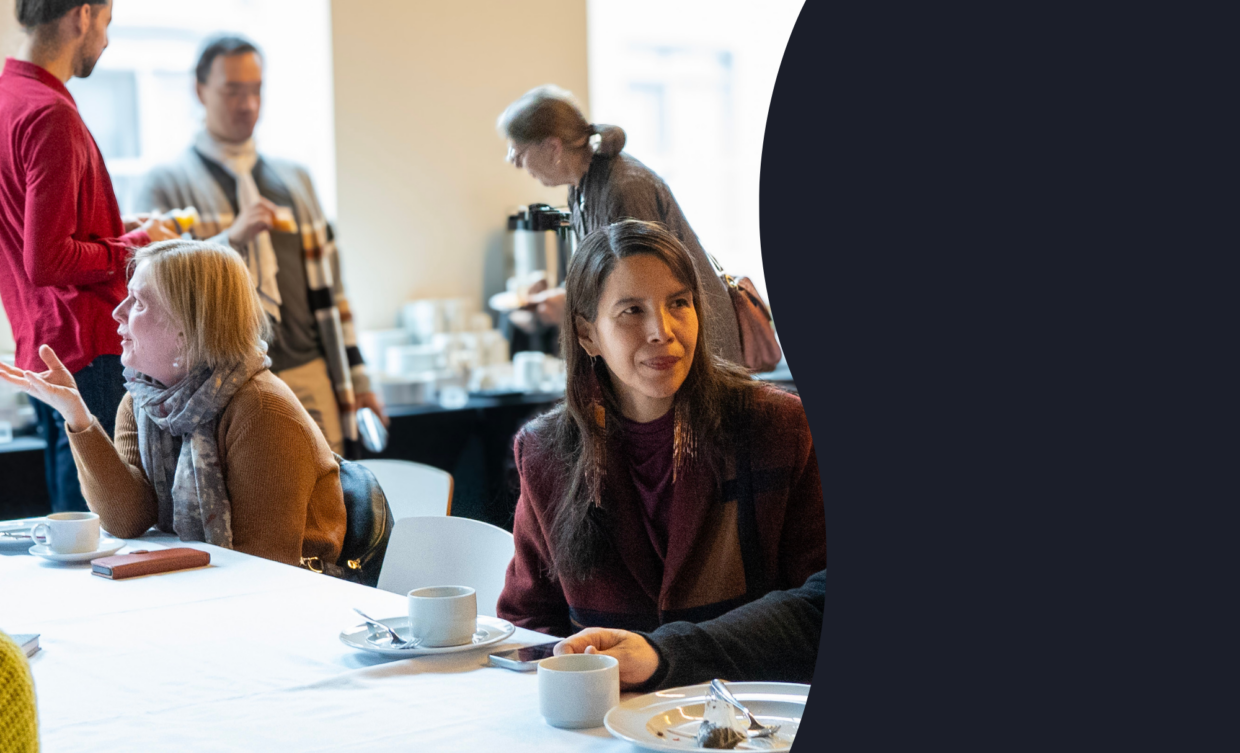
Recommendations
& Next Steps
To continue the progress made by the MOVE project, here are three key recommendations:
1. Embedding Equity in Meetings and Advocacy
- Include a standing agenda item in CanDance meetings for members to share ongoing equity projects and questions.
- Schedule weekly equity meetings within organizations to learn, review operations, and develop advocacy strategies centered on equity.
- Meet annually with funders to discuss specific equity needs for each organization and individual artist.
2. Reviewing and Using the MOVE Website Toolkit
- Conduct an equity audit of your organization using the MOVE toolkit.
- Incorporate somatic practices into organizational processes.
- Build capacity through collaborative equity data collection, as outlined in Namaste Data resources.
- Create affinity groups to support equity practices in organizational planning, partnerships, and programming.
3. Prioritizing Rest, Creation and Collaboration
- Implement four-day work weeks and flexible work arrangements.
- Focus on quality over quantity, ensuring adequate funding for quality work.
- Celebrate successes within the organization. Adopt slow touring practices to build deep relationships with presenters.
- Foster collaborations and connections within the Board of Directors.
